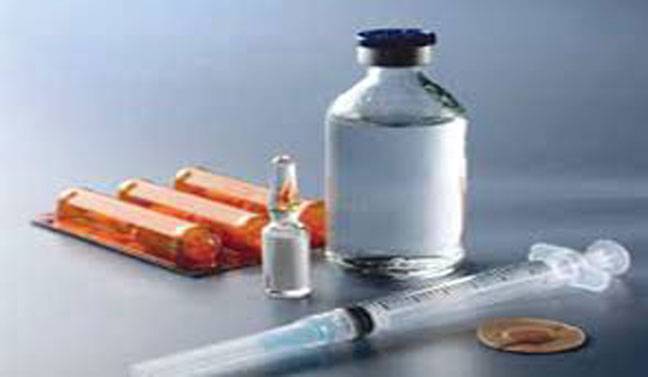LAHORE - As many as 35.5 million adults in Pakistan are diabetic, according to The Diabetes Prevalence Survey of Pakistan 2017.
The exercise carried out during the ongoing year shows staggering 16.98 per cent prevalence of silent killer among the adult population. The latest exercise belies old figures of 6.56 per cent of diabetes prevalence, affecting just 7.6 million people in Pakistan, which is mentioned in the International Diabetes Federation 2017 Atlas. Diabetes prevalence triplicates under the fresh survey conducted by Hayatabad Medical Complex, Peshawar, in collaboration with the Pakistan Endocrine Society and Institute of Public Health and Social Sciences, Khyber Medical College University, University of Manchester and University of Glasgow.
“One in every six persons is a diabetic in Pakistan as a whopping 9.04 per cent of new diabetes mellitus (without them being knowing about their disease) were added in the fresh findings,” Prof A.H. Amir, Consultant Endocrinologist, Hayatabad Medical Complex, Peshawar, unveiled the latest survey during his presentation on “Prevalence of Diabetes – Past, Present and Future; How are we doing?” at the PES-SAFES Summit 2017 titled “Together for Endocrinology”, organised by Pakistan Endocrinology Society – South Asian Federation of Endocrinology Societies (PES-SAFES), at a local hotel on Saturday.
Dr A.H. Amir said that, based on census results of 2017 for adult population, approximately 21.9 million are suffering from diabetes mellitus (DM), which suggests ratio of 1:7 for diabetes prevalence among population aged 20 or above. Out of total prevalence in the latest survey, at least 17.85 per cent female population is affected and 16.22 male populations is suffering from the disease.
He informed that Diabetes Prevalence Survey of Pakistan (DPSP) was planned in February 2017 and started latest by April this year and was completed as recently as in November 2017 despite one-month break during the Holy Month of Ramazan. One lead epidemiologist headed three research teams having three members each to conduct the research.
This scientific/medical survey was conducted upon a total of 18,856 eligible screened subjects out of initial sample size of 22,100 patients from amongst 378 clusters including 216 in rural areas and 162 in urban areas across Pakistan.
The male subjects included 10,100 (53 per cent) and female subjects 8,756 (47 per cent) from Sindh, Interior Sindh, Punjab, Southern Punjab, Balochistan, Khyber Pakhtunkhawa (central, southern and northern parts), Islamabad/Rawalpindi, Azad Jammu Kashmir-Gilgit Baltistan (AJK-GB) and Federally Administered Tribal Areas (FATA).
He explained the methods included multi-staged random cluster sampling as each cluster comprised 50 households with face-to-face interviews to collect basic demographic data.
The Hb% test was conducted for eligibility after exclusion of all aneamic patients, which was followed by HbA1c performed, DCCT aligned, NGSP certified. Later, the nested sub-sample was tested with OGTT.
Breaking down the national figures of 16.98 per cent diabetics including 9.04 per cent new Diabetes Mellitus (DM), the AJK registered prevalence of 17.57 pc of diabetics with 13.36 pc new DM, Interior Sindh recorded 14.01 pc diabetics with 8.46 pc new DM, Islamabad registered 21.67 pc diabetics with 10.94 pc new DM, Karachi showed 16.16 pc diabetics with 10.56 pc new DM, FATA registered 23.53 pc diabetics with 14.10 pc new DM, Peshawar recorded 17.56 pc diabetics with 6.59 pc new DM, Lahore registered 15.30 pc diabetics with 6.17 pc new DM, Quetta showed 18.24 pc diabetics with 12.94 pc new DM, South Punjab recorded 12.90 pc diabetics with 7.41 pc new DM, Northern KP registered 19.19 pc diabetics with 9.90 pc new DM.
The samples were taken from rural and urban areas of Karachi in Sindh (1052); districts of Sukkur, Larkana and Dadu in Interior Sindh (1249); Lahore district in Punjab (1052); districts of Multan, Bahawalpur and Rahim Yar Khan in South Punjab (3938); Quetta district in Balochistan (850); districts of Karak and Haripur in Northern KPK (5986); Peshawar in central KPK (3081); Rawalpindi and Islamabad (946); Muzaffarabad in AJK-GB (498); districts of FR Peshawar and Khyber Agency in FATA (204).
Dr A.H. Amir further revealed 10.91 per cent prevalence of pre-diabetics with real time figure of 22.6 million pre-diabetics in Pakistan, which suggested prevalence ratio of 1:7 for pre-diabetics in the country. However, based on census 2017, approximately 14.30 million people (10.94 per cent female and 10.88 per cent male) with a ratio of 1:9 were found to be pre-diabetics in the country.
While converting data from research to real life situation, Dr A.H. Amir revealed that for every known three diabetics, there are another two undiagnosed diabetics as well as two pre-diabetics. If someone has a Body-Mass Index (BMI) of more than 23, an uneducated person with a family history of diabetes would have a significant chance of contracting the disease.
With regard to data on obesity, Dr A.H. Amir informed that, based on BMI and World Health Organization (WHO) criteria of BMI 25, at least 31 per cent of population is normal weight with BMI 25, 35 per cent is overweight, 20 per cent is obese class-1, 7 per cent is obese class-2 and 4 per cent is obese class 3. Based on BMI WHO Asian criteria with BMI 23, at least 17 per cent of population is normal weight with BMI 23, 29 per cent is overweight, 31 per cent is obese class-1, 13 per cent is obese class-2 and 7 per cent is obese class 3.
Dr A.H. Amir asserted that this was the largest research study on prevalence of diabetes ever conducted in Pakistan. He said that the country’s health budget and economics as well as personal health and economics had direct implications on these startling figures of diabetes prevalence in the country. He suggested to the government and individuals to allocate enough funding to look after its complications, plan for early diagnosis/pre-diabetes.
IQTIDAR GILANI






